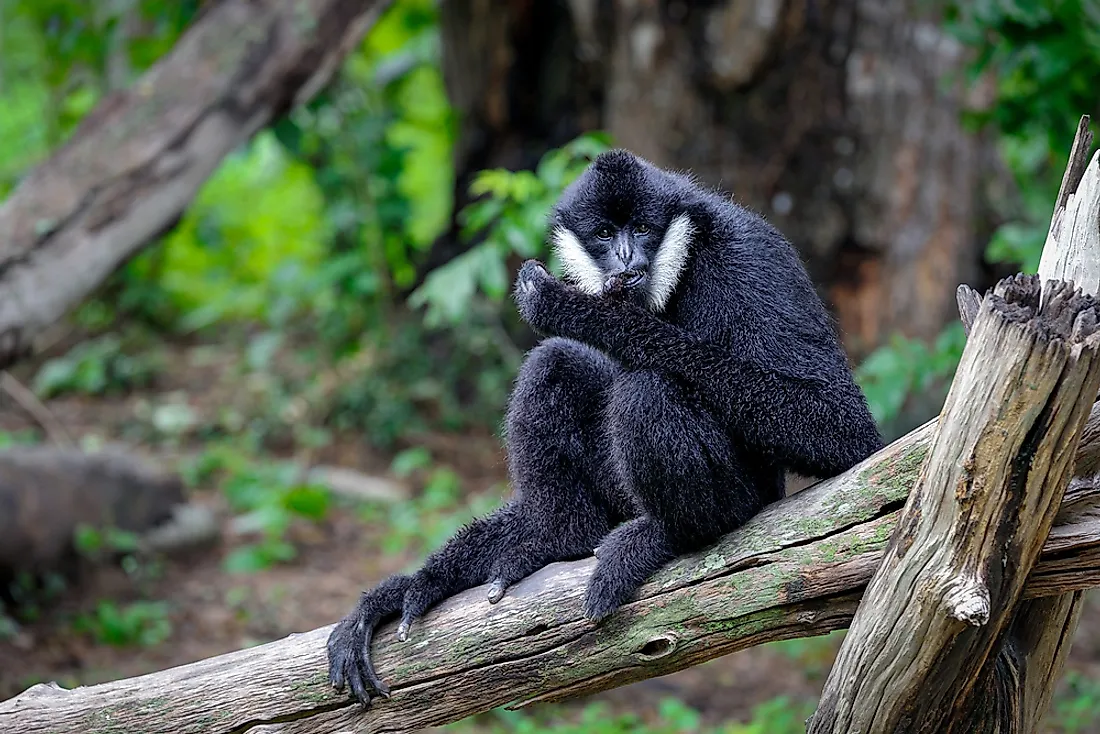The Four Species Of Gibbons On The Brink Of Extinction

The gibbons are a group of apes belonging to the Hylobatidae family and include four genera with 18 species. The gibbons occur in the Asian continent where their range spreads across parts of South and Southeast Asia. Human activities currently threaten the survival of several species of gibbons. The four most threatened or critically endangered gibbon species are mentioned below.
4. Black Crested Gibbon
The four subspecies of Nomascus concolor are found in parts of Southeast Asia where they are geographically isolated. The range of the species includes China, Vietnam, and Laos with the distribution of the species being discontinuous in nature. These animals live in small groups in the evergreen and deciduous forests where they lead an arboreal way of life. The altitudinal range of the species varies between 2100 and 2400 m above sea level. Since deforestation is widespread in Southeast Asia, the habitat of the black crested gibbon is currently reduced to small patches of forests. The gibbons are also highly susceptible to poaching activities. Thus, the species is labeled as ‘critically endangered’ by the IUCN and has only about 1300 to 2000 individuals left in the wild.
3. Hainan Gibbon
The Nomascus hainanus is found only in China’s Hainan Island where it is regarded as an umbrella species whose conservation status determines the state of stability of the entire ecosystem. The species inhabits broad-leaved and semideciduous monsoon forests on the island. Currently, the species is struggling to survive. Although the historical range of the Hainan gibbon included nearly half of China, the range is now highly restricted to only small parts of the Hainan Island. Only about 22 gibbons have been recorded in the most recorded count in the Bawangling National Nature Reserve on the island. Poaching, logging, illegal pulp paper plantations, etc., are responsible for the sad state of these gibbons. Traditional Chinese medicines promote the use of gibbon bones.
2. Eastern Black-crested Gibbon
The Nomascus leucogenys is a critically endangered species occurring in Southeast Asia. Although its historical range was much widespread, the species is currently found only in the northern parts of Laos and Vietnam. Within its range, the species lives in primary evergreen forests at altitudes ranging from 660 to 5,410 ft. The species has suffered from massive deforestation in its range. Large parts of the primary forests have been converted to agricultural lands and the remaining parts have been used for the extraction of timber and fuel-wood. Hunting of the gibbon for food and traditional medicine preparation is also another major cause of the decline of the species and its presumed extinction from China.
1. Northern White-cheeked Gibbon
The Nomascus nasutus lives in the northern parts of Vietnam and Southeast China. Although the species was considered to be extinct in the wild due to the absence of any sightings between the 1960’s and the 2000’s, a confirmed discovery of a small population in 2002 in Vietnam and later a discovery in China raised hopes that the species might still last for a few years more. Currently, the population of the species is estimated to be less than 50 individuals. The eastern black-crested gibbon is also subject to threats similar to the above-mentioned gibbon species.











